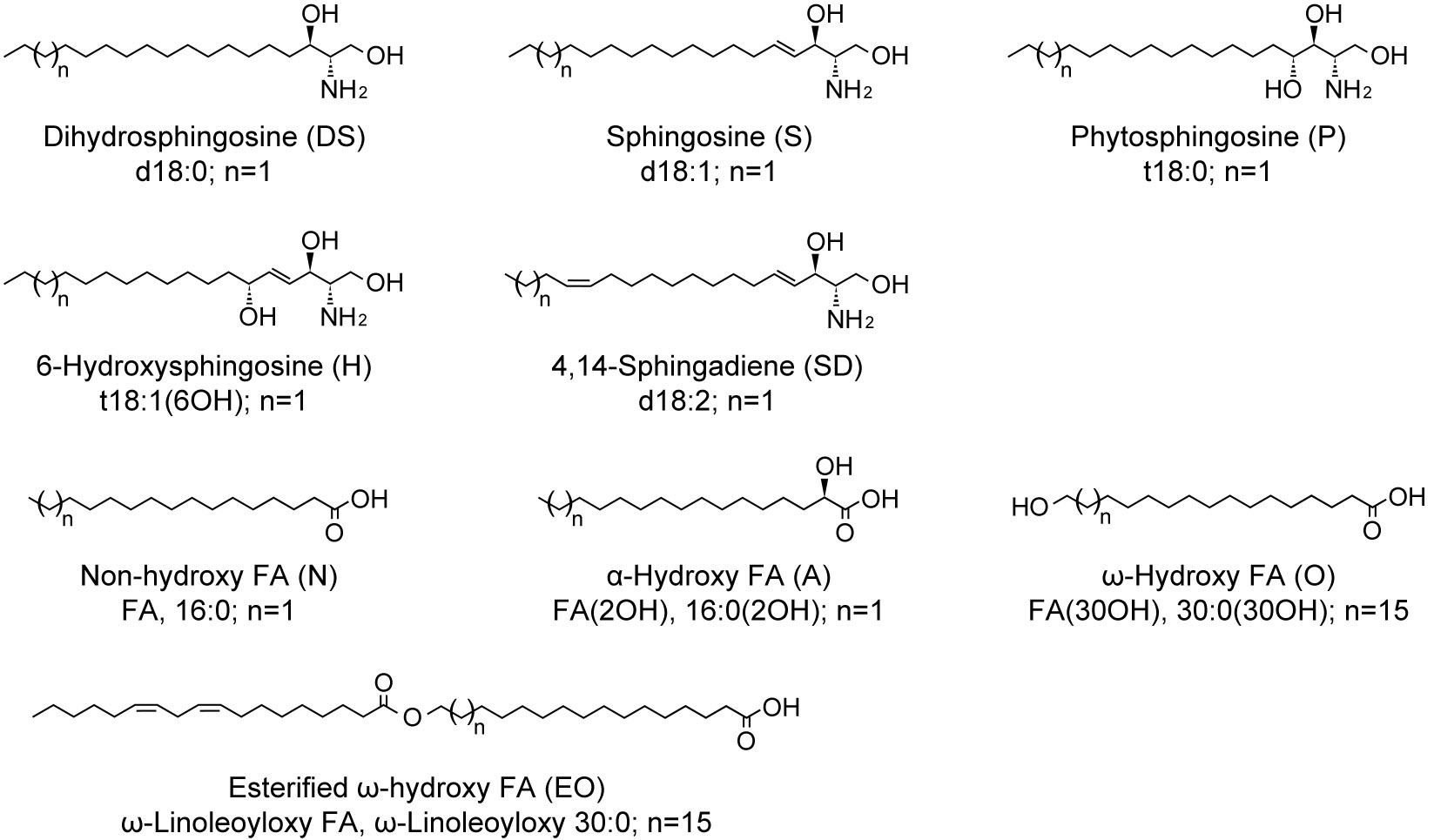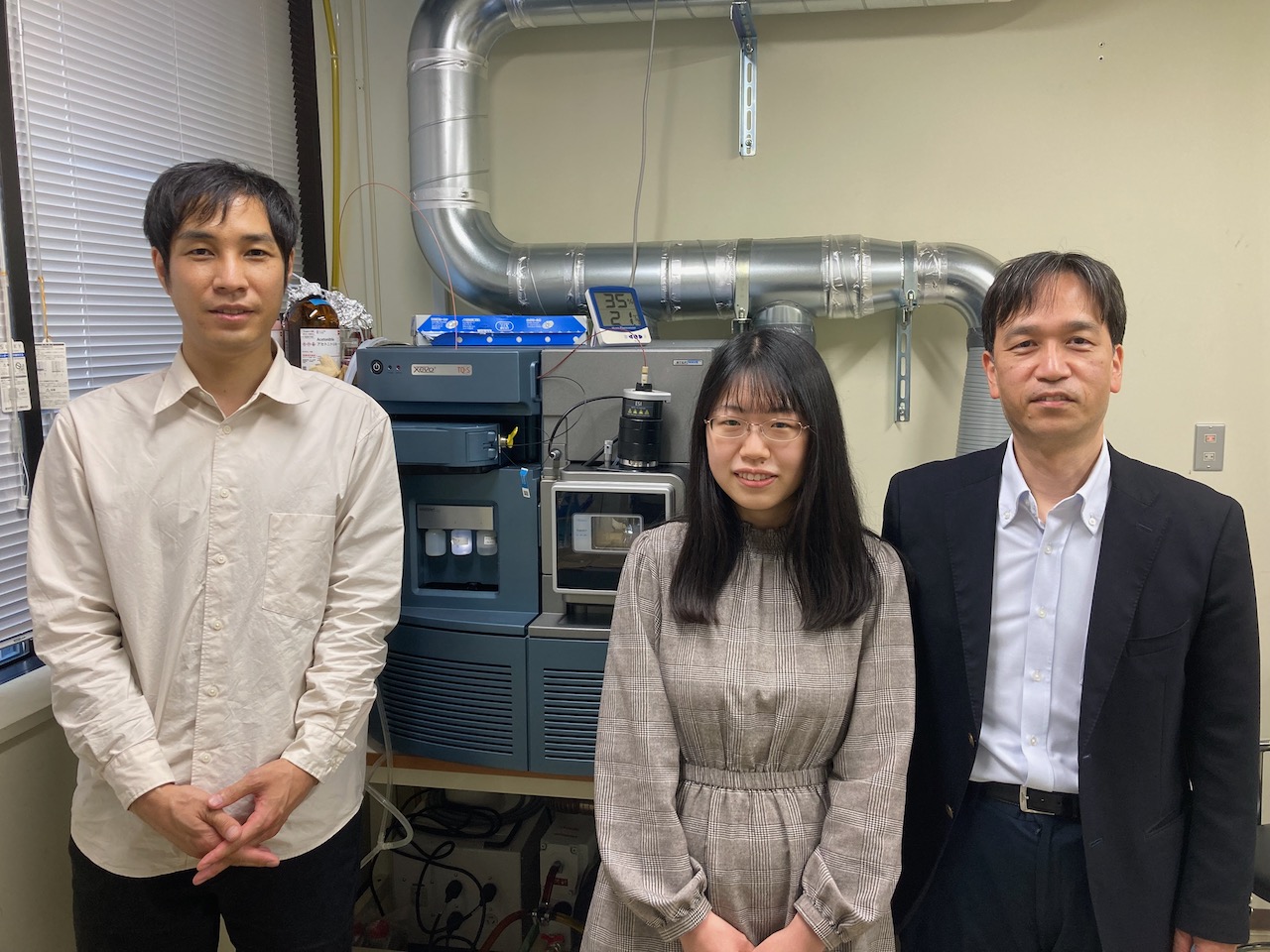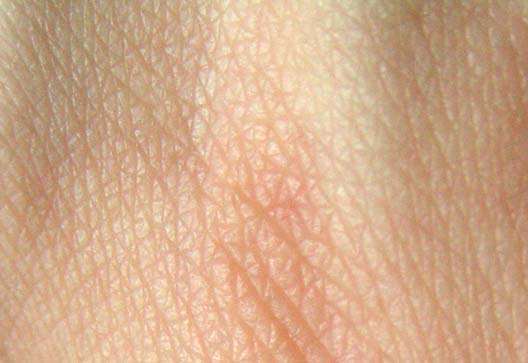Skin’s protective chains uncovered
Research Press Release | June 29, 2022
The skin’s top layer contains a diverse set of hundreds of lipid molecules called ceramides with varying chain lengths that play a vital role in its barrier function.
Ceramides are a type of lipid that are found in abundance in the top layer of the skin, called the stratum corneum. They play a crucial role in the skin’s barrier function, preventing entrance of pathogens and allergens and the loss of water and electrolytes. Mutations in the genes involved in the production of ceramides lead to a wide range of skin diseases.
A new analytical approach has revealed the full range of different ceramides found in the top layer of human skin. The results were published by Hokkaido University scientists in the Journal of Lipid Research and could improve understanding of skin diseases like psoriasis and dermatitis.
Scientists have struggled to get a full picture of the types of ceramides present in the stratum corneum due to difficulties in separating them from each other and then specifically identifying each one. The technological approaches that have so far been used to do this have not been sensitive enough.
Professor Akio Kihara and fellow biochemists at Hokkaido University in Japan developed an approach to address this. They used a method called liquid chromatography with tandem mass spectrometry using the multiple reaction monitoring mode. This approach separates the various ceramides in the skin and then selectively quantifies them by converting molecules into ions that are manipulated in electric and magnetic fields to sort them according to their mass-to-charge ratios.
By doing so, the team identified 1,327 different unbound ceramides and another 254 that are bound to proteins. They were also able to discover certain details of the ceramides, such as the lengths of their basic structural unit, called the long-chain base and the types of fatty acids they are conjugated to. They found, for example, that the long-chain bases ranged in length from 16 to 26 carbon atoms and that the 18-carbon-atom length was the most abundant.

Structures of the components of human ceramides. The abbreviations used in this study are shown in parentheses after each compound name, and the standard recommended names are shown below them (Madoka Suzuki, Yusuke Ohno, Akio Kihara. Journal of Lipid Research. May 30, 2022).
Further analyses revealed that an enzyme called serine palmitoyltransferase was important for the diversity in ceramide long-chain base length in human stratum corneum.
“Total ceramide chain length is reduced in people with atopic dermatitis,” says Kihara. “We think that the presence of the longer long-chain bases in ceramides is required for normal skin barrier function. In the future, comprehensive measurements of ceramides in people with skin disease could reveal the relationship between changes in ceramide composition and the pathology of each disease.”

Yusuke Ohno (left), Madoka Suzuki (center) and Akio Kihara (right), authors of the study, in front of the mass spectrometer used in the study (Photo: Akio Kihara).
Original Article:
Madoka Suzuki, Yusuke Ohno, Akio Kihara. Whole picture of human stratum corneum ceramides, including the chain-length diversity of long-chain bases. Journal of Lipid Research. May 30, 2022.
DOI: 10.1016/j.jlr.2022.100235
Funding:
This work was supported by the Takeda Science Foundation; the Cosmetology Research Foundation; and the Japan Society for the Promotion of Science (JSPS) KAKENHI (JP18H03976, JP22H04986).
Contacts:
Professor Akio Kihara
Laboratory of Biochemistry
Faculty of Pharmaceutical Sciences
Hokkaido University
Tel: +81-11-706-3754
Email: kihara[at]pharm.hokudai.ac.jp
Sohail Keegan Pinto (International Public Relations Specialist)
Public Relations Division
Hokkaido University
Tel: +81-11-706-2186
Email: en-press[at]general.hokudai.ac.jp
Related Press Releases:
Missing link in rare inherited skin disease exposed
Unraveling the mechanism of skin barrier formation

